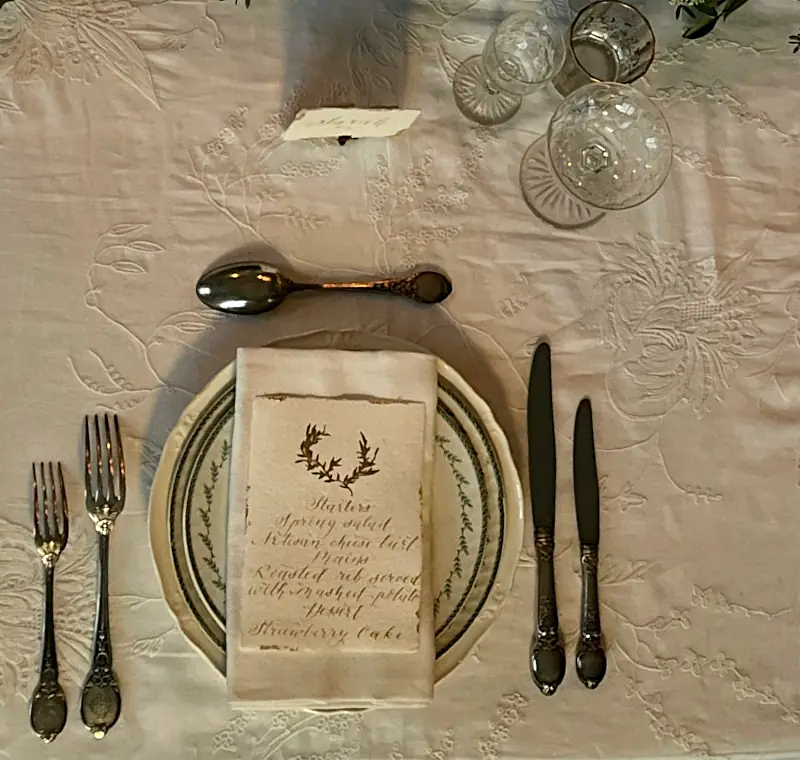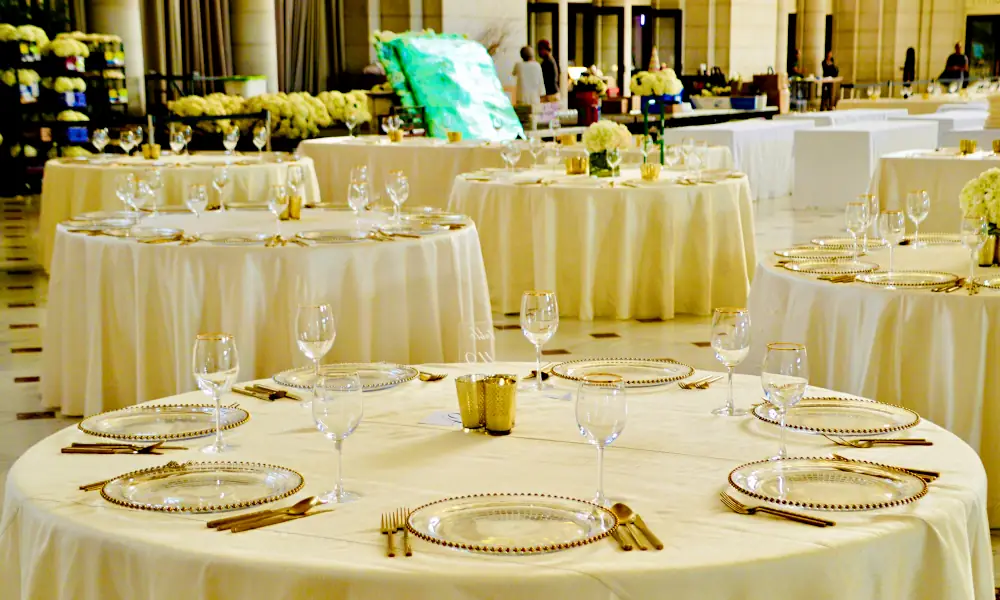Dining etiquette is more than just knowing which fork to use—it’s about showing respect, confidence, and consideration at any table. Whether you’re at a family dinner or a formal banquet, mastering table etiquette reflects positively on your character and helps others feel at ease.
Table of Contents
- What Is Dining Etiquette?
- Table Etiquette Rules to Know
- Understanding the Correct Table Setting for Dinner
- Eating Manners and Etiquette by Course
- Tips for Dining Etiquette
- Did You Know About Dining Etiquette?
- Frequently Asked Questions About Dining Etiquette
- What is dining etiquette?
- How do I set a formal dinner table correctly?
- Is it okay to start eating before others are served?
- What’s the correct way to use a napkin during dinner?
- How do I show I’m finished with my meal?
- Should I talk during meals?
- What if I drop a utensil?
- Does “dine” only refer to dinner, or can it mean other meals too?
- Conclusion on Dining Etiquette
What Is Dining Etiquette?
Dining etiquette encompasses the accepted rules of behavior when eating in social or professional settings. It covers how you sit, eat, converse, and use your utensils. Practicing proper dining manners not only enhances your personal presentation but also creates a pleasant environment for those around you.
Good dining table etiquette includes using the correct utensil, waiting for everyone to be served, chewing with your mouth closed, and participating politely in conversation.
Table Etiquette Rules to Know
5 Core Table Etiquette Rules
- Sit upright and place your napkin in your lap.
- Don’t start eating until the host begins.
- Keep elbows off the table while eating.
- Chew with your mouth closed and don’t speak with food in your mouth.
- Excuse yourself before leaving the table.
These fundamental table etiquette rules apply to almost all dining situations.
Understanding the Correct Table Setting for Dinner
A proper place setting creates order and clarity at the table. Here is a guide to the correct table setting for dinner:
| Item | Placement |
|---|---|
| Dinner plate | Center of the place setting |
| Forks | To the left of the plate |
| Knives and spoons | To the right (knife blades inward) |
| Water glass | Above the knife |
| Napkin | To the left of forks or on the plate |
Knowing how to navigate multiple utensils and courses is a key part of dinner etiquette.
For an in-depth guide on utensil usage, see our Silverware Etiquette article.

Eating Manners and Etiquette by Course
Appetizers
Use the outermost utensils first. Don’t fill your plate too high from a shared platter.
Main Course
Cut only one or two bites at a time. Don’t use bread to push food onto your fork.
Dessert
Wait until dessert utensils are brought or use those placed above your plate.
Following these eating manners and etiquette keeps the meal flowing smoothly and gracefully.
Tips for Dining Etiquette
5 Tips for Dining Etiquette
- Avoid reaching: Ask politely if something is out of reach.
- Pace yourself: Eat slowly so everyone finishes around the same time.
- Compliment lightly: Compliment the food or host, but avoid overdoing it.
- Use polite phrases: Say “please,” “thank you,” and “excuse me” consistently.
- Handle mishaps with grace: Quietly excuse yourself if you drop a utensil or spill something.
Practicing good table etiquette makes every meal more comfortable for you and your fellow diners.
Did You Know About Dining Etiquette?
- The modern fork wasn’t widely used in Europe until the 1600s. Before that, fingers and knives were the norm.
- Napkins were once giant cloths slung over the shoulder in Roman banquets.
- In Victorian times, strict dining manners were a mark of class and upbringing.
- In some cultures, burping is a compliment to the chef—while in others, it’s offensive.
Understanding global dining etiquette can be especially helpful for international meals or travel.
Frequently Asked Questions About Dining Etiquette
What is dining etiquette?
Dining etiquette refers to the proper behavior and table manners expected during meals, especially in social or formal situations.
How do I set a formal dinner table correctly?
Place the fork to the left of the plate, knife and spoon to the right, napkin to the left or on the plate, and the water glass above the knife.
Is it okay to start eating before others are served?
In formal settings, you should wait until everyone is served and the host gives a signal to begin.
What’s the correct way to use a napkin during dinner?
Place the napkin on your lap at the start, use it to dab your mouth as needed, and place it beside your plate when finished.
How do I show I’m finished with my meal?
Place your fork and knife parallel on the plate in the 4:20 clock position to signal you are finished.
Should I talk during meals?
Yes, light conversation is encouraged—but avoid controversial topics, chewing while talking, or dominating the conversation.
What if I drop a utensil?
Discreetly ask a server for a replacement or wait for one to be offered. Do not pick it up and use it.
Does “dine” only refer to dinner, or can it mean other meals too?
The word “dine” can refer to any formal or significant meal, not just dinner. While it’s often associated with dinner in everyday usage, people also say “dine out for lunch” or “dine at brunch.” The word “dine” comes from the Latin disjejunare, meaning to break a fast, which is the origin of “dinner” as well. So yes, “dine” and “dinner” are historically related, but today, “dine” applies more broadly to the act of eating any meal, especially in a formal setting.
Conclusion on Dining Etiquette
Mastering dining etiquette adds polish to your presence, whether you’re dining with friends, clients, or strangers. From table etiquette rules to the correct table setting for dinner, following these timeless practices shows respect and builds confidence. For a deeper understanding of utensil placement and use, don’t miss our companion post on Silverware Etiquette.

